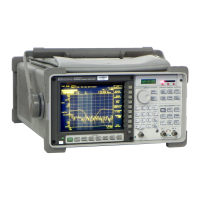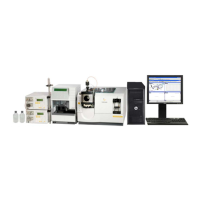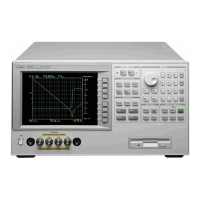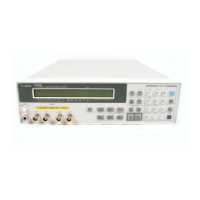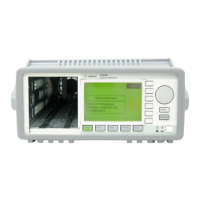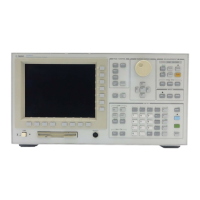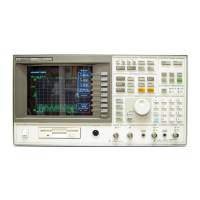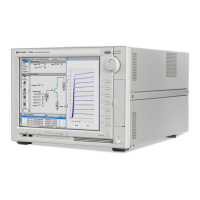Theory of
Operation
This
section
describes
the
overall operation
of the
4349B and
the operation
of each
assembly.
Overall
Measurement Theory
The
4349B measures
the
resistance
of
a
Device
Under
T
est
(DUT)
in
the
following
manner
.
Figure
4-1.
Ohm's
Law
In
Figure
4-1
,
a
DUT
is
connected
in
series
with
test
voltage
source
V
,and
ammeter A.
If
the
ammeter
measures
I
amperes
when
the
source
voltage
is
V
,
the
DUT's
resistance
R
is
expressed
by
(when
ignoring
r):
R
=
V
I
This
equation
means
that
if
the
DUT
resistance
R
is extremely
high,
the
current
owing
the
circuit
is
extremely
low
.
F
or
example
,
if R
=1
G,
and
V
=
1
V
,
the
current
owing
is
1
nA
(10
0
9
A).
The
4-Channel
High
Resistance
Meter
4349B
is
essentially
four (or
two) sets
of
very
sensitive
current
meters
.
Note
In
practice
,
ammeter
input resistance
r,
which is
approximately
1
k
,
decreases
the current
owing
through
the
DUT
.
The
actual
current,
I,
owing
through
the
DUT,
R, is
expressed
by:
I
=
V
R
+
r
In the current
measurement mode
, the 4349B displays the actual current I
for the measurement result.
For example
, if R = 100 k
,andV=1V
, the
measurement result will be 9.9
A(
1
100
k
+1
k
) rather than 10
A(
1
100
k
).
In the resistance measurement mode
,
on the other hand, the 4349B displays the
\derived" DUT resistance which coincides with the
DUT resistance
.Inother
words, the 4349B shows the resistance
calculated by:
R
=
V
I
0
r
For example, if R = 100 k, and V = 1 V, the measurement result will be
100 k, even the actual current owing through the DUT, thus through the
ammeter with r is 9.9
A.
Troubleshooting 4-3

